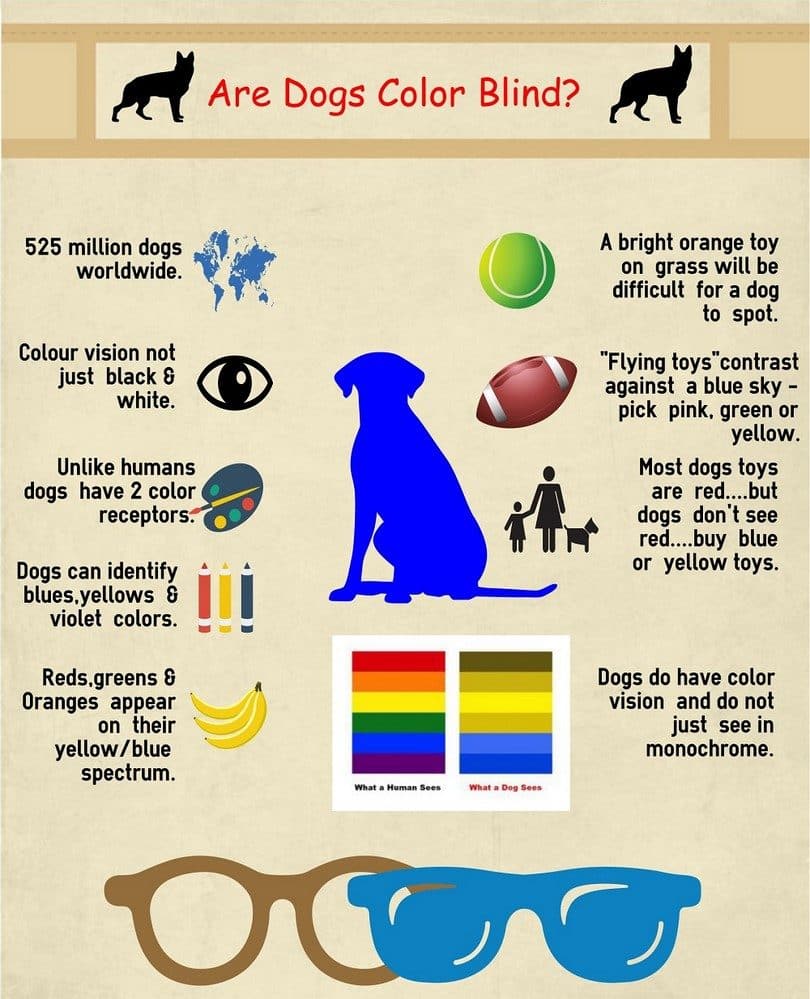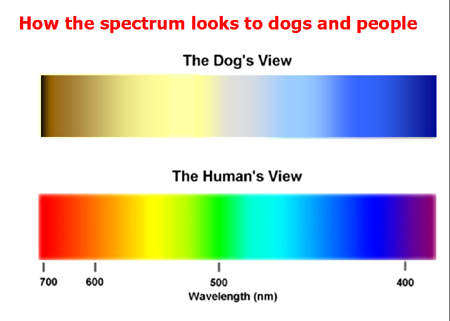Unlike the popular belief that dogs are colorblind, your dog can actually see more than you have thought. The vision in the dog is much more similar to humans, however, they do not perceive the color as we do.
The movement and color are perceived by rods and cone cells in the retina respectively.
Retina is a layer at the back of the eyeball that contains cells sensitive to light, which trigger nerve impulses that pass via the optic nerve to the brain, where a visual image is formed.
Human eyes have more cones than rods, hence they can perceive more colors. They are also gifted with fovea which enables them to see the image in higher resolution. However, dogs possess more rods than cones which enables them to perceive light and movement, hence they are able to see better in the dark.

Anatomy of Dog’s Eyes
Dog’s eyes are similar to us humans. Their eye anatomy is similar to us which contains cornea, pupil, lens, retina, and rods, and cones. Like us, dogs do often encounter eye problems which are prone in humans.
Although the positioning of a dog’s eyes is a lot like us— at the front of the face, they have a better visual field.
Dogs have a total visual field of about 240-250 degrees which is 20% greater than that of a human. Dogs can pick the movement of objects better.
Unlike humans, dog’s eyes can’t perceive high-resolution vision. They have a better peripheral vision but lack binocular-vision like us.
A Dog’s Color spectrum
The human eye can see 7,000,000 colors. Some of these are eyesores. Certain colors and color relationships can be eye irritants, cause headaches, and wreak havoc with human vision.
To put it in simple term, the dogs' color field consists mostly of yellows, blues, and violets, while humans can perceive reds, greens, and oranges, which aren't distinguishable to dogs. Instead, they appear somewhere on their yellow to blue spectrum.
Dogs are Dichromats
Dichromacy is the state of having two types of functioning color receptors, called cone cells, in the eyes. Organisms with dichromacy are called dichromats.

Canine's Night Vision Ability
With more rod cells in the eyes, Dogs are better at perceiving movement and vision in the dark. Rod helps to perceive movement and vision, however, it lacks clarity and resolution generating cell called ‘fovea’. Dogs aren’t as good as humans in perceiving the detail image of an object. However, they are very good at catching movement hence are a good chaser. They can see better in the dark, hence, they notice even small change in movement even in low light.
Dog's Sense of Smell
Humans have a typical sense of smell, however, dogs can smell far better than us. That’s because dogs have 300 million olfactory receptors in their noses. A human nose has only around 400 types of scent receptors.
Dog’s make up with their heightened sense of smell for their lower perception of colors.
Vision issues in Dogs
Dogs often lose their sight due to multiple factors. Some of the common factors are;
- Aging
- Heredity
- Disease
- Injury
Blindness in dogs is sometimes a secondary symptom to other diseases such as heart, liver, or kidney ailments or other systemic diseases such as diabetes.